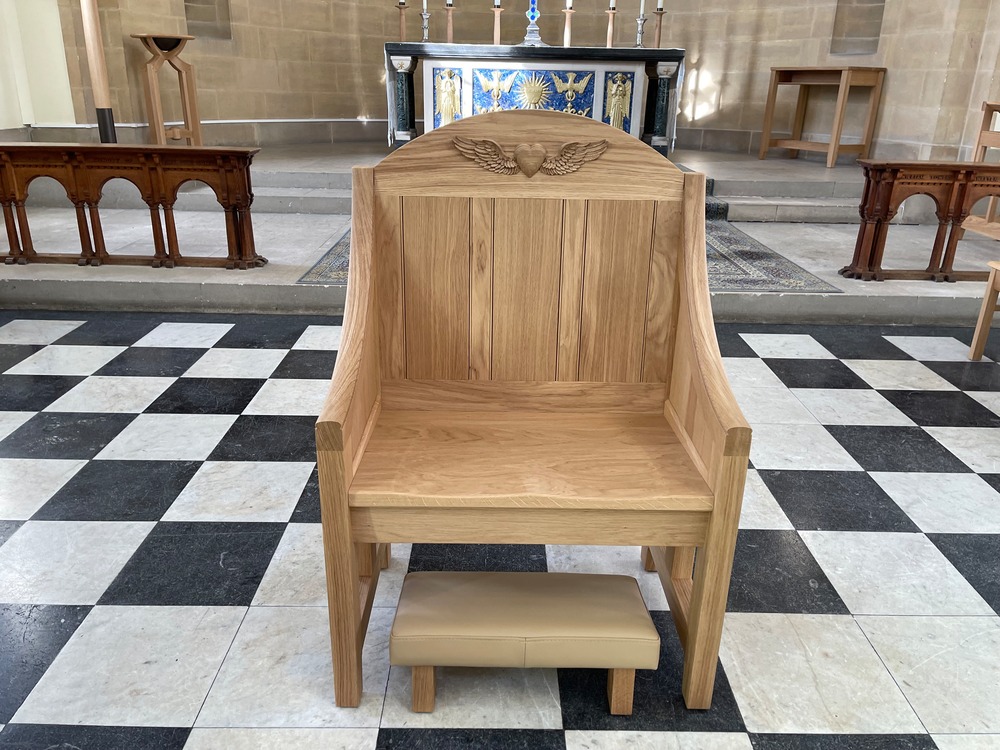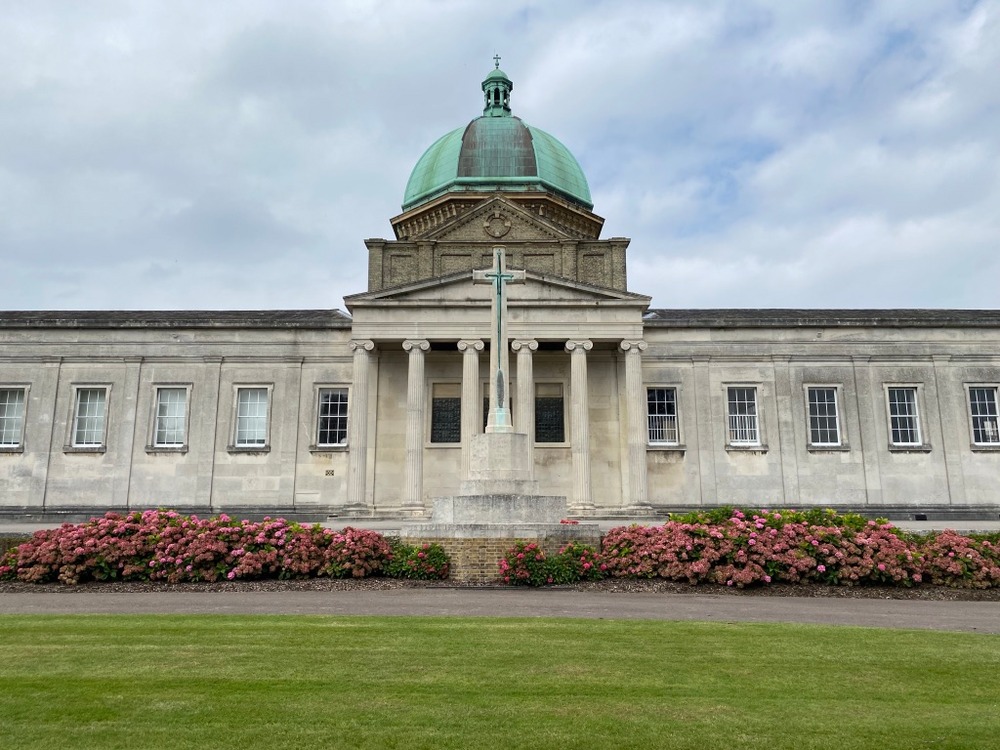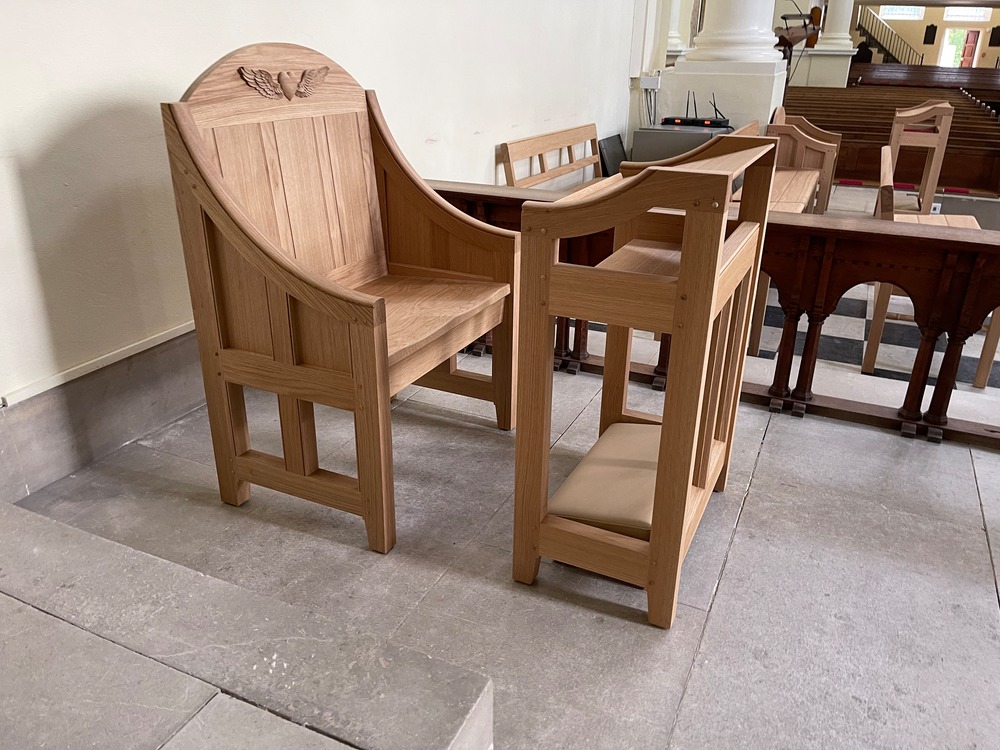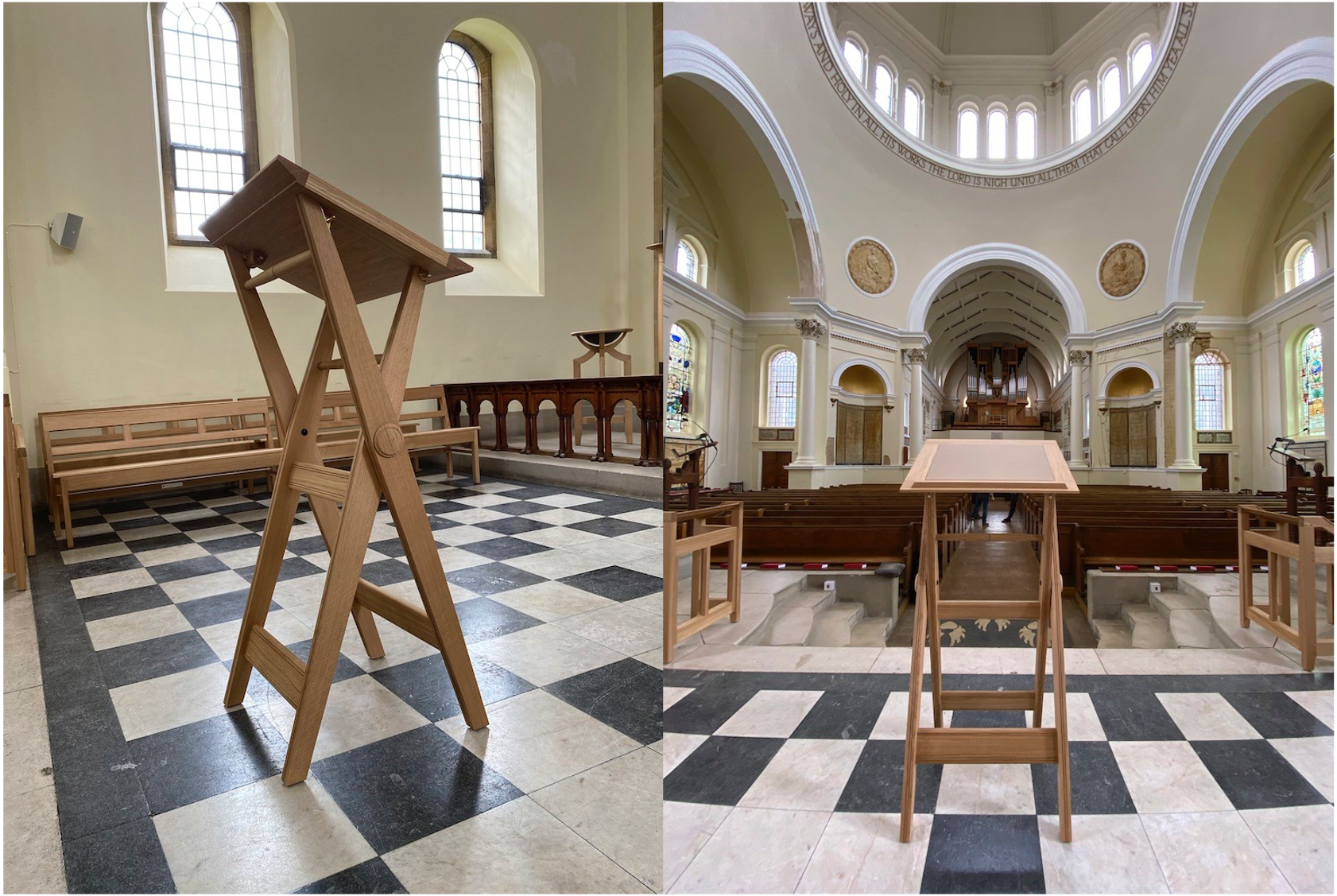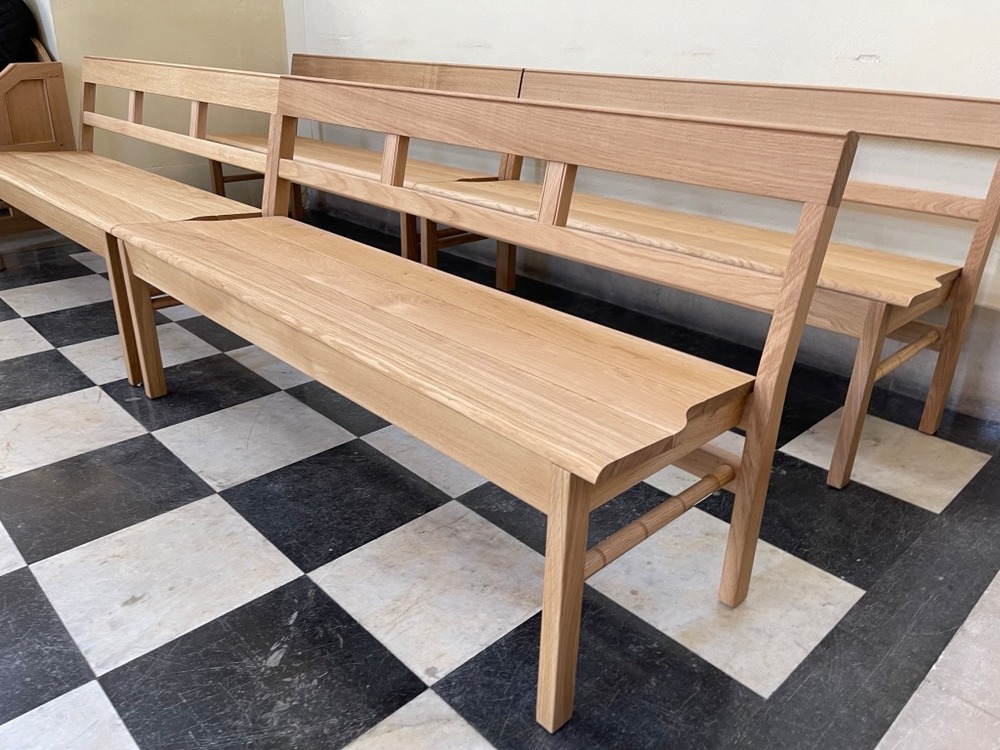The client representative was the newly appointed School chaplain, the Reverend. Christopher Stoltz, who was determined to use the chapel for other academic and extra-curricular purposes as well as for worship. The chapel is integral to the life of staff and students at the school and Rev. Stoltz was concerned that those who use the space should do so with dignity and grace. He particularly admired the furniture Luke Hughes produced for the White Tower in the Chapel of St John at the Tower of London. It is from this project and the inherent architectural qualities of the chapel that we derived the designs for the new chapel furniture for Haileybury.
Below: Presider's chair, prayer desk, choir benches, folding ligilium with paschal and altar candles, behind.
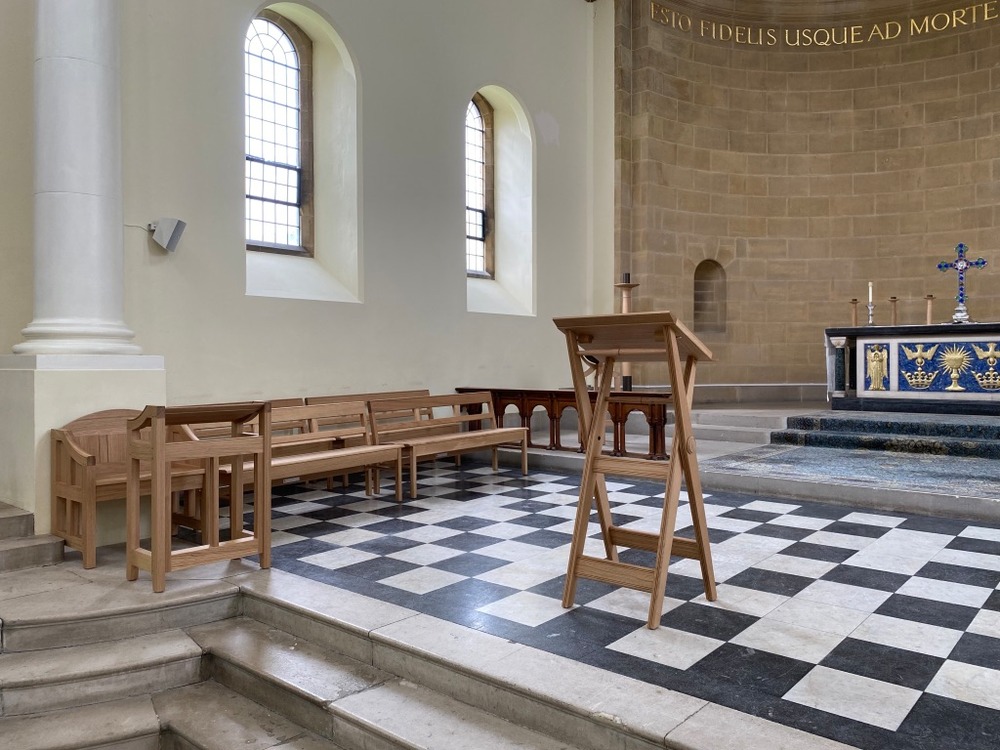
What it replaced
As it happened, the chapel’s apse was remodelled and extended in the 1930s by Sir Herbert Baker, in his own stripped-down interpretation of a classical style. With each intervention over the past 150 years, the chapel had inevitably accumulated considerable clutter in terms of its furniture - a hodge-podge of styles, sizes, timber types and colours. Rev. Stoltz was clear in his aspiration to allow the original architectural forms to ‘speak’ again, to recover some visual calm and harmony, with the furniture quietly supporting both contemporary liturgy and secular purpose.
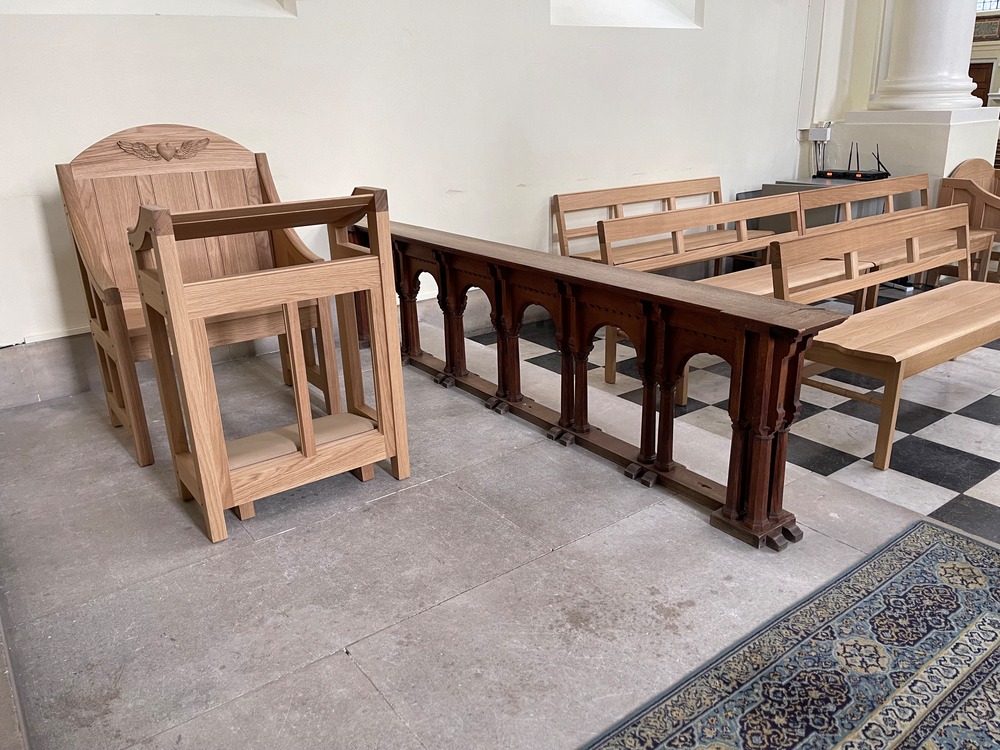
Funding
The project was funded by the Hobson Charity, which donated the funds to support the commissioning of the new designs on the condition that Luke Hughes was instructed. Initially, the Hobson family had stipulated the donation should be anonymous but later decided it was proud to be publicly associated with the project. Accordingly, the Hobson Charity crest was carved on the front of the clergy chairs. Visitors can now look out for the delicately carved swans’ wings, tokens of the vitality of the chapel’s current users and the renewed purpose of one of the finest school ecclesiastical buildings in the country.
Below: The Presider's chair with upholstered church kneeler, with swan's wings from the Hobson's Charity crest, carved in oak.
